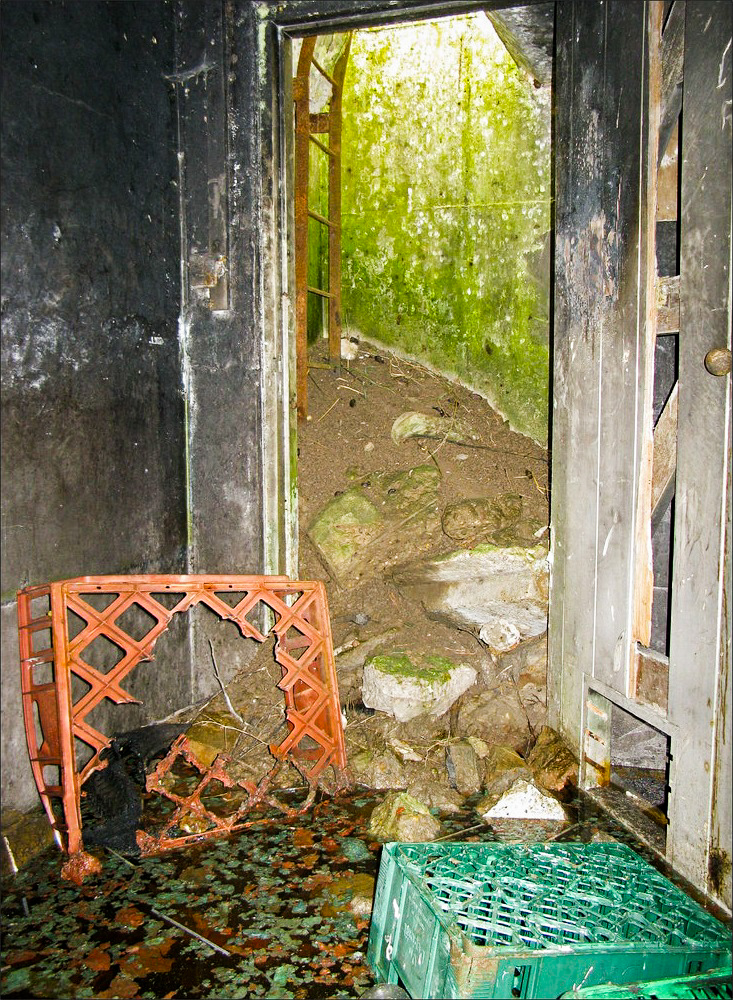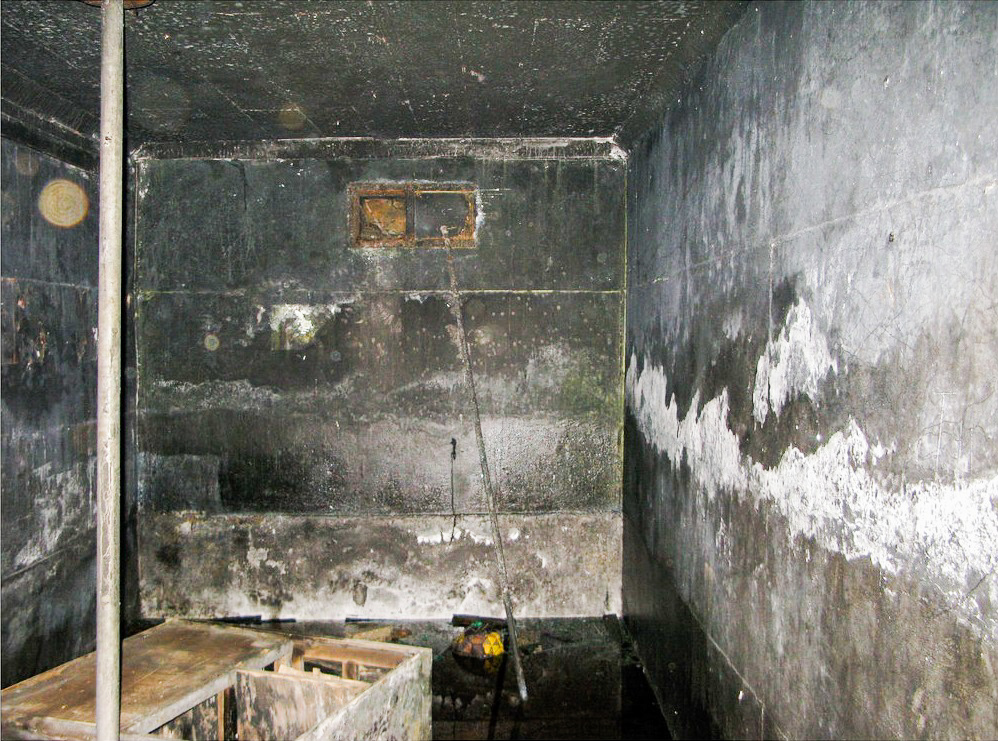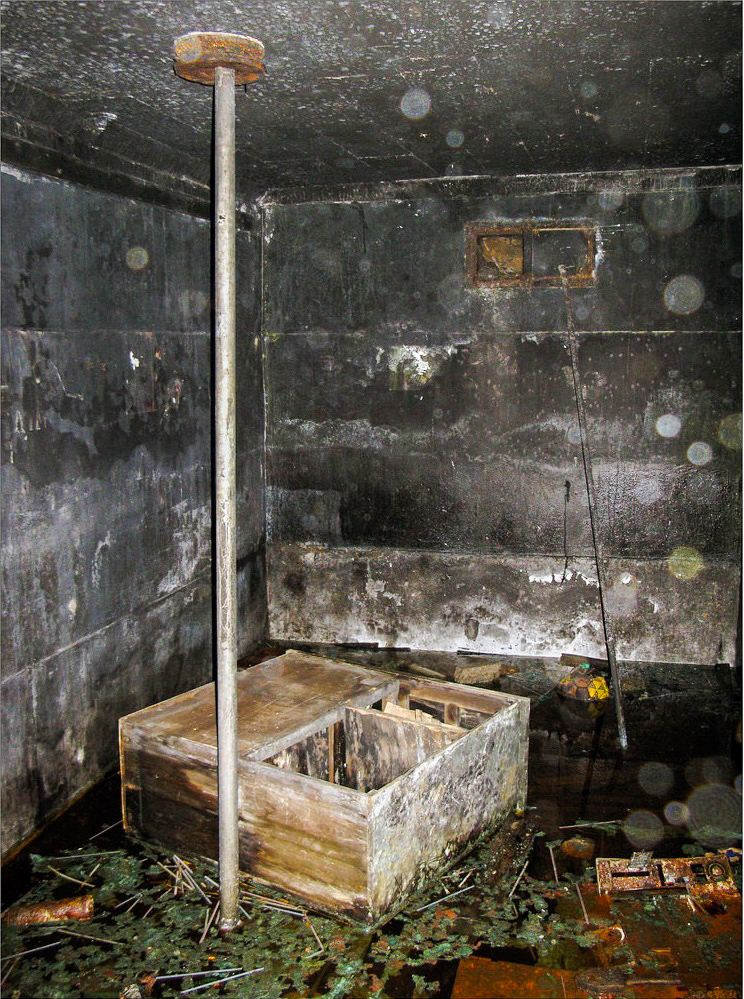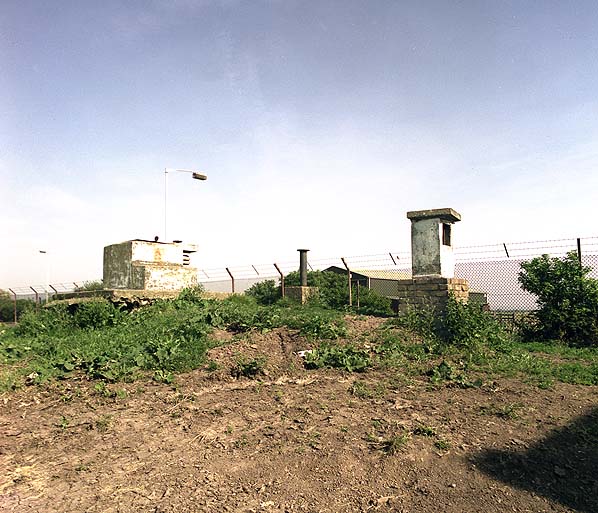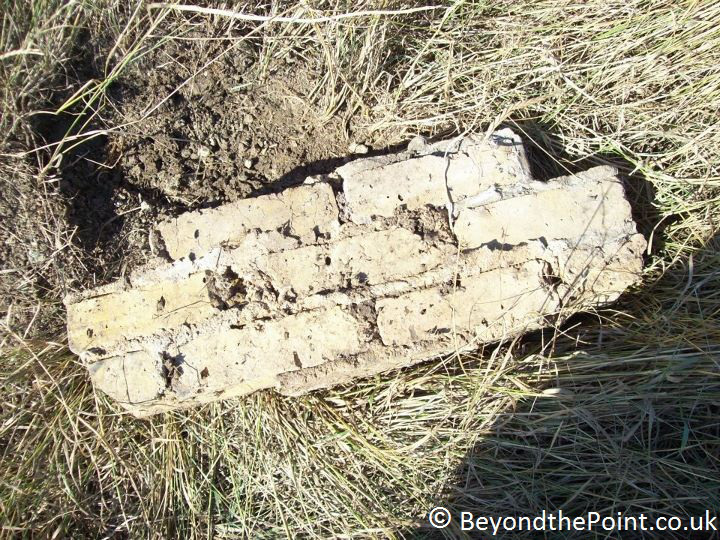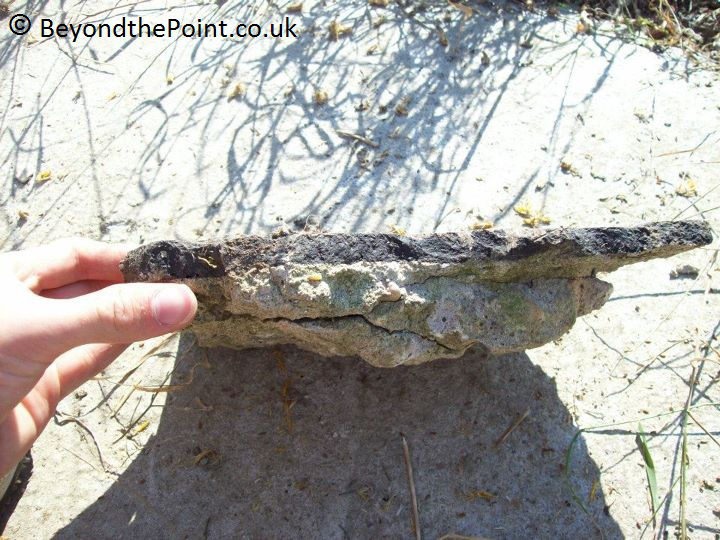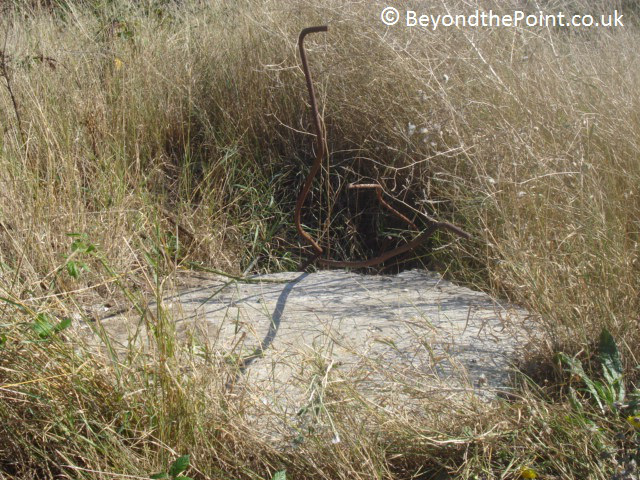Photos from Dave Bullock. Above ground photo by Nick Catford.
Nick Catford from the amazing site Subterranea Britannica visited the site in 1997, 1998, and 2000. He records:
When first inspected in 1997 the post was in reasonable external condition with all surface features intact but with some land erosion around the access shaft. The FSM pipe is mounted on a raised concrete plinth and the ventilation shaft is mounted on ten course of bricks. Internally the post is in good condition although completely stripped apart from the cupboard and some wiring. The white paintwork is still in good clean condition. When inspected in October 2000 the ventilation shaft was found to be badly damaged, as was the hatch, which is now detached from the access shaft. Recent development in the area has missed the post but its future remains uncertain.
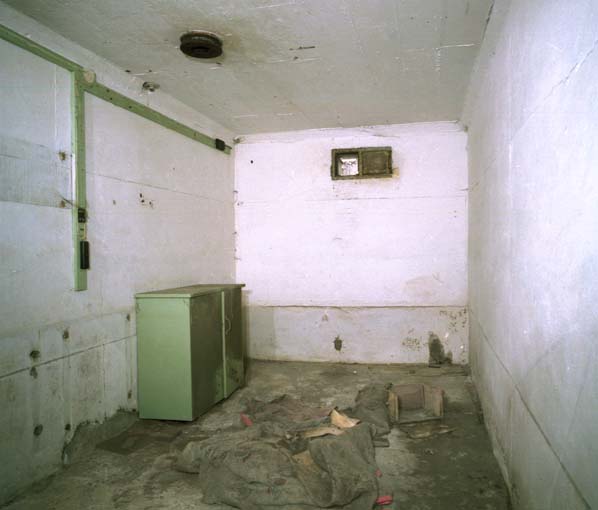
Dave Bullock from Canvey.org visited the site in 2008 when the above ground features had been demolished. The inside had been victim of an arson attack. Shortly after the entrance shaft was capped (filled with concrete) which is when we visited. Below is a scale model ROC post which BTP Liam made to match the design of the one that once stood on Canvey. Using photographs taken by those fortunate enough to visit it, he crafted this from scratch using wood and clay before painstakingly painting it. Note how the Canvey specimen featured a brick stand for the survey meter.
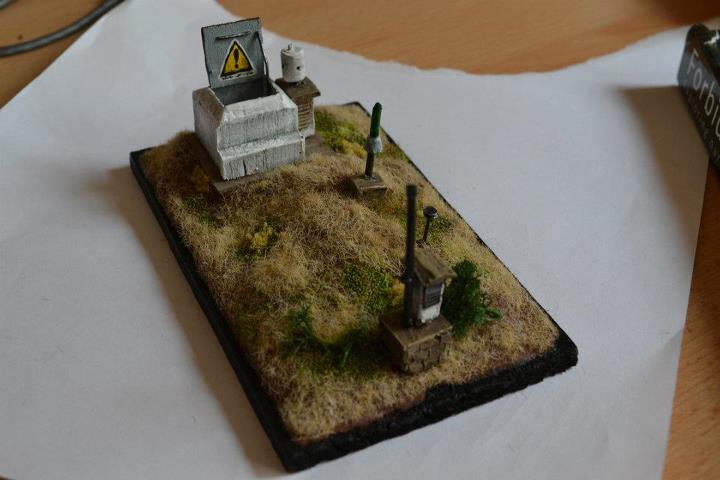
Our Visit in 2012
The BTP boys when in search of Canvey Island’s ROC Post, located north-east of McDonald’s. We had seen images of it on Flickr and had be told some knowledge of it and it’s history from the Bay Museum. The Royal Observer Corps, would be used to monitor the effects of a nuclear explosion to record the wind direction, power of the weapon and if the ROC monitors survived the aftermath, to report the damage inflicted; although in truth the job was recognised as a suicide mission. Find out more here.
When we arrived the had the difficultly of getting in as the area was quite over grown. We came across what appeared to be an old gate and fence, with a channelled concrete base, near to the ROC post, although, with thanks to Dave Bullock, we later found out this was part of the Occindental Oil Refinery. This was used to house cabling in the channels, and is located in the same land only a few yards south of the bunker. As we always do, we set off with satellite images of the area so we kept referring to them to try and find out where the bunker was, but as it was overgrown, it wasn’t much use! We came across several area’s that we thought might be it, but with closer inspection, we realised that it didn’t have any wires near the surface, which the images on Flickr clearly showed. We finally came across a mound that would have matched with the satellite images, so BTP Liam and I started to explore when I found the entrance to it on the top. Unfortunately it was filled in but we decided to burrow down a little into the mud. We found various shards of the wall, some bits even had the original paint on.

